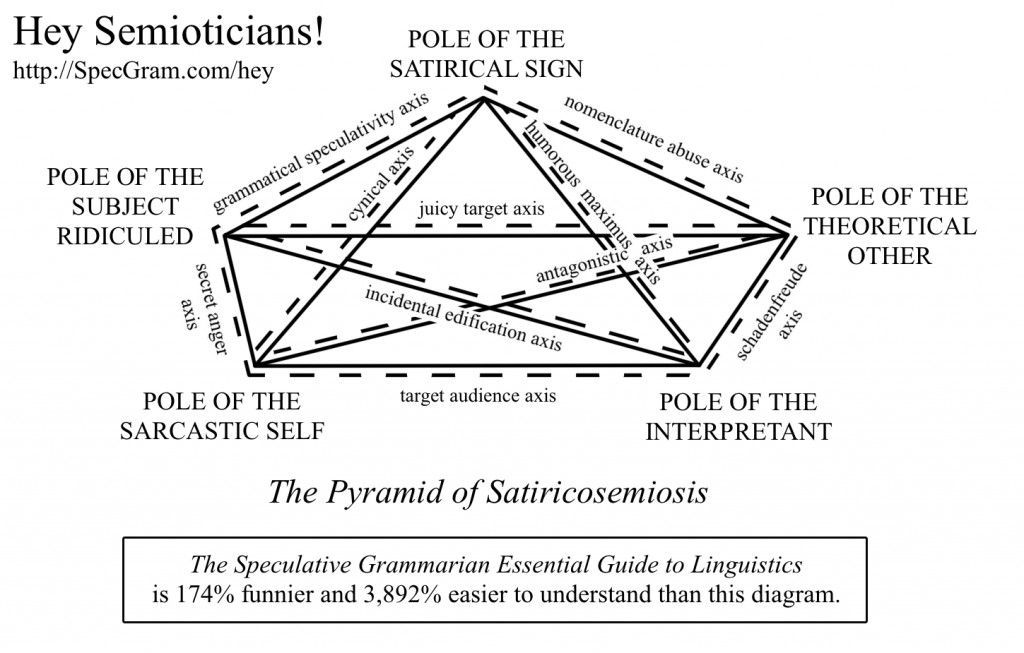From the website:
Hey Linguists! Do you know why it is better to give than to receive? Because giving requires a lot more work! You have to know what someone likes, what someone wants, who someone is, to get them a proper, thoughtful gift. That sounds like a lot of work.
No, wait. That’s not right. It’s actually more work to be the recipient—if you are going to do it right. You can’t just trust people to know what you like, what you want, who you are.
You could try to help your loved ones understand a linguist’s needs and wants and desires—but you’d have to give them a mini course on historical, computational, and forensic linguistics first. Instead, you can assure them that SpecGram has the right gift for you—a gift you, their favorite linguist, will treasure for years to come: The Speculative Grammarian Essential Guide to Linguistics.
So drop some subtle or not-so-subtle hints and help your loved ones do the right thing this holiday season: gift you with this hilarious compendium of linguistic sense and nonsense.
If you need to convince your friends and family that they can’t find you a proper gift on their own, send them one of the images below, and try to explain to them why it amuses you. That’ll show ’em! (More will be added through the rest of 2015, just in case your friends and family are a little thick.)
• If guilt is more your style, check out 2013’s Sad Holiday Linguists.
• If semi-positive reinforcement is your thing, check out 2014’s Because You Can’t Do Everything You Want for Your Favorite Linguist.
Disclaimer: I haven’t proofed the diagrams against the sources cited. Rely on them at your own risk. 😉
There are others but the Hey Semioticians! reminded me of John Sowa (sorry John):
The greatest mistake across all disciplines is taking ourselves (and our positions) far too seriously.
Enjoy!
